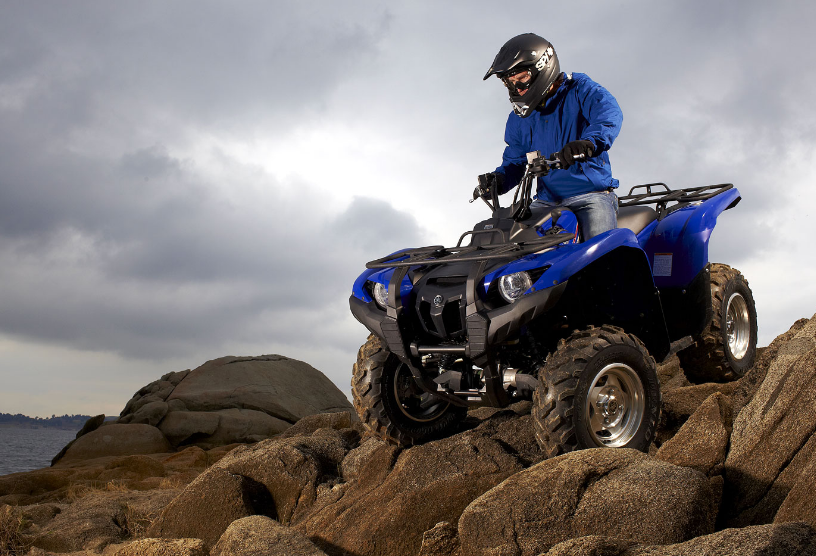Disclosure: We may get commissions for purchases made through links in this post.
The Yamaha Warrior 350 changed the face of the four-wheeler market when it came out in 1987. It became such an icon that it continued to grow more popular despite its production discontinuing in 2004. The Warrior gave drivers more torque, was entry-level friendly, and was useful for any rider level.
The Yamaha Warrior 350 offers speed and versatility. It can traverse hard packs, swamp holes, sand, and pavement. The Warrior was the world’s first electric start ATV and grew to be a top-selling quad even after a 17-year production run.
So if you’re wondering if you should get a Yamaha Warrior 350, or just looking for tips on how to restore your old quad, keep reading about this impressive ATV.
The Yamaha Warrior 350 was produced from 1987 to 2004 and is considered by many to be one of the best ATVs Yamaha has ever made. This sport ATV was designed for strong midrange pulling capabilities and was fitted with a snorkel kit for mudding and riding in shallow water. The Warrior was initially intended for casual and sport riding and received high praise for its practical, fun, and user-friendly design.
Yamaha stopped producing the Warrior 350 in 2004 to launch a different model to improve the line’s performance. The Warrior line became known as the Raptor, with the machine barely changing since its introduction.
By that time, other companies took after Yamaha to use electric starter systems on their ATVs/UTVs. Almost two decades have passed since the final year of the Yamaha Warrior 350’s production, but its cult-like following’s love for the sports quad remains unaltered.
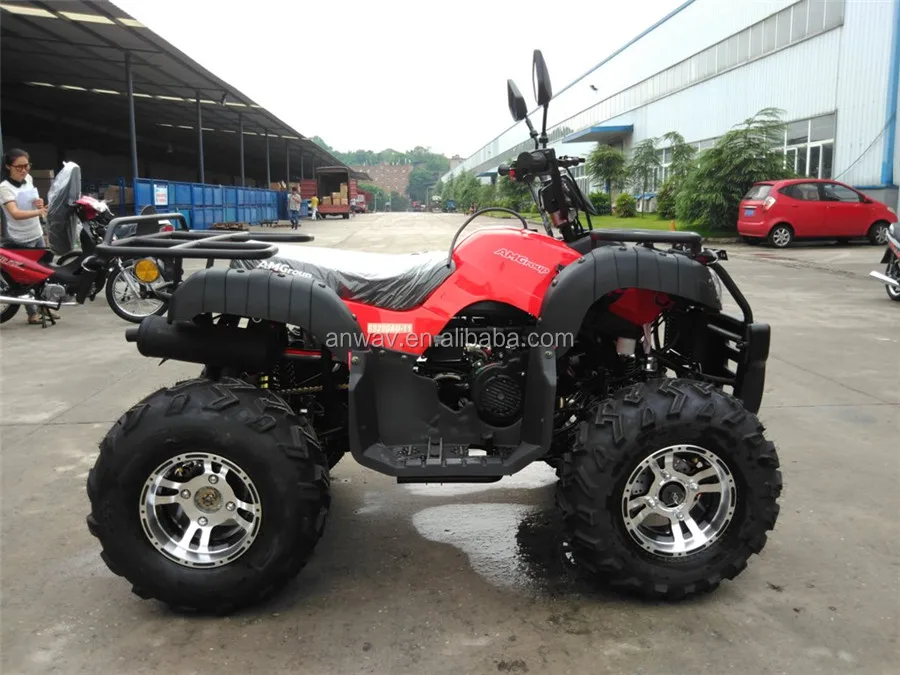 A 36-millimeter Mikuni carburetor handles the air-fuel mixture with a compression ratio of 9.2:1. Fuel tank capacity is 2.4 gallons/9.1 liters (the gas tank varied in size and held 3.2 gallons on early models).
A 36-millimeter Mikuni carburetor handles the air-fuel mixture with a compression ratio of 9.2:1. Fuel tank capacity is 2.4 gallons/9.1 liters (the gas tank varied in size and held 3.2 gallons on early models).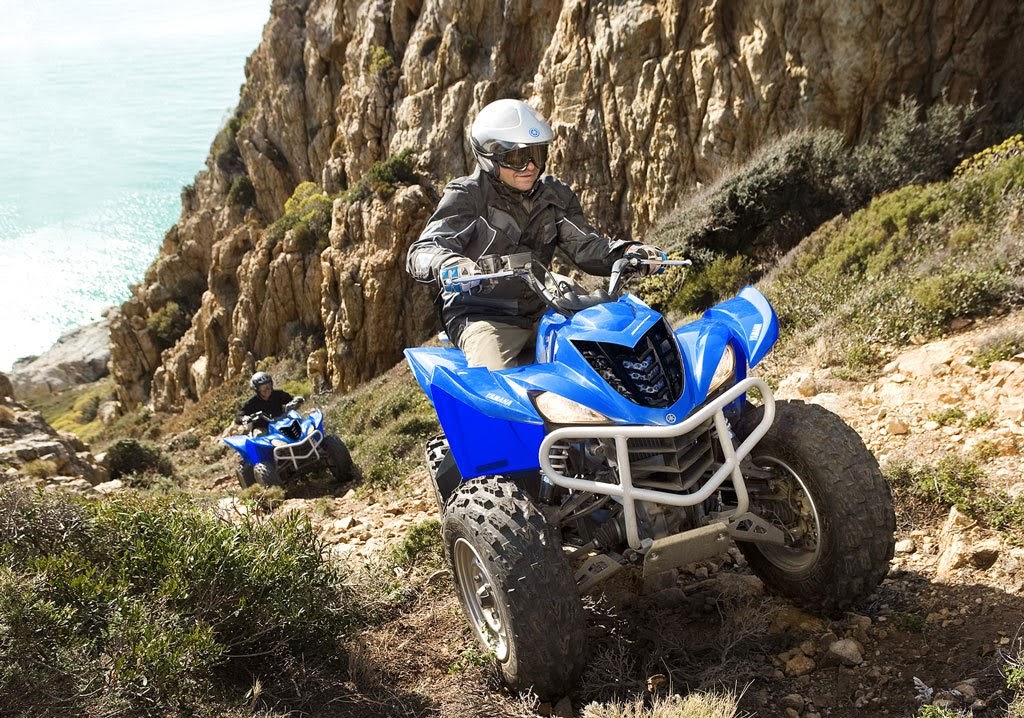 9 inches of travel.
9 inches of travel.A stock Yamaha Warrior 350 can reach speeds of up to 63 mph on even surfaces. Potential top speed is affected by weather, rider weight, quad condition, upgrades, and several other factors, so results may slightly differ for individual drivers.
If you have already done a Raptor rebuild, then mods on this machine would be a piece of cake (since the Raptor shares the same engine as the Warrior 350). For pro-level motocross and off-road riders who want to build a champion Warrior 350, they usually go to a professional outfit such as the Duncan Racing International (DRI) to improve their quad.
For pro-level motocross and off-road riders who want to build a champion Warrior 350, they usually go to a professional outfit such as the Duncan Racing International (DRI) to improve their quad.
One of the simplest, least expensive ways to gain power is to replace the stock system with a lighter, less restrictive exhaust and intake combined with jazzed-up cams. By itself, upgrading the Yamaha Warrior 350 exhaust to a JFG RACING Slip-on Exhaust Muffler (view on Amazon) already does the job. But what’s better is it would further complement results of additional engine mods you intend to do on your quad.
On the other hand, the cams would boost mid-range and top-end power without forfeiting the Warrior 350’s easy-to-ride power delivery. Plus, it is suitable for the stock piston. It would also be a good idea to throw in a new air cleaner kit that includes a better, high-flow filter with a mounting flange that seals more positively than a stock filter.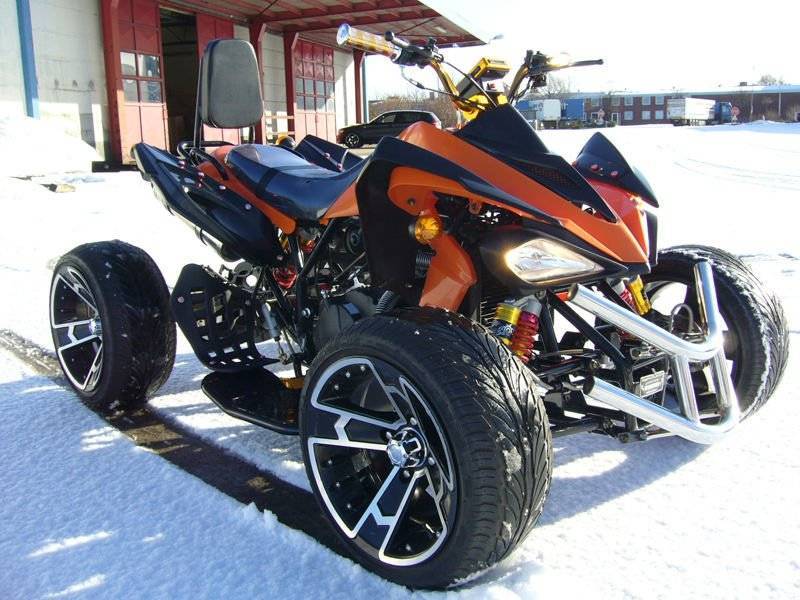
Changes like bolting on an exhaust, opening the airbox, adding a UNI filter, and re-jetting are other things that you can do to wake your Warrior up. If you ride in dusty conditions, it is advisable to get a foam filter kit. A regular K&N filter would work in not-so-dusty areas.
More ambitious mods include polishing the head, changing valve springs, getting a larger carburetor, and replacing stock starter with a completely new ignition kit. These changes make the Yamaha Warrior 350 go up to speed a lot faster than the original.
Handling also plays a part in sharpening your ATV’s performance. Replacing your stock tires with racing tires improves balanced cornering and puncture resistance. You may also need to change handlebars into something with a more natural bend.
Lots of options online provide sleek designs without compromising steering control. Pair this with a fully adjustable steering stem with anti-vibration bar mounts and a GPR steering stabilizer, and you’re good to go.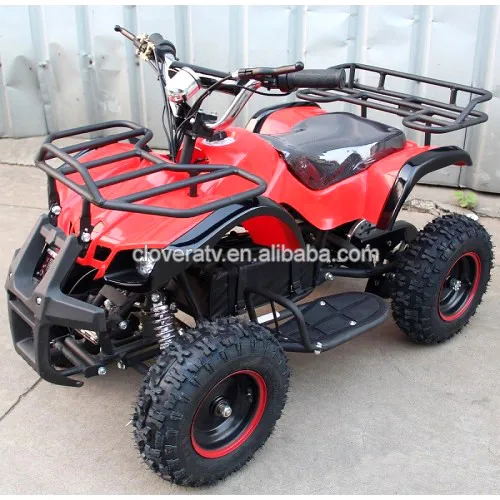
Minor modifications may not give as much satisfaction compared to high-end, pricey ones. Either way, mods will still rack up your expenses. But you don’t have to worry about repeat costs if you are an enthusiast who has more than one ATV parked in your garage.
Nowadays, the majority of Yamaha Warrior 350 parts (OEM and aftermarket) do not solely fit one particular four-wheeler. You can transfer these race-ready parts to any other quad you ride.
A lot of riders shifting from a different ATV brand to a Yamaha find the reverse a bit tricky. They move the lever forwards and backward, but they are only getting first gear forward and not first gear reverse. Some have also tried pulling up and shifting the lever – pushing down and shifting it – shifting it with the engine off (among other attempts) but to no avail.
The different ways this quad is put in reverse, depending on its model year, tend to be confusing. For instance, some say that a 2000 model should be in second gear first before reverse.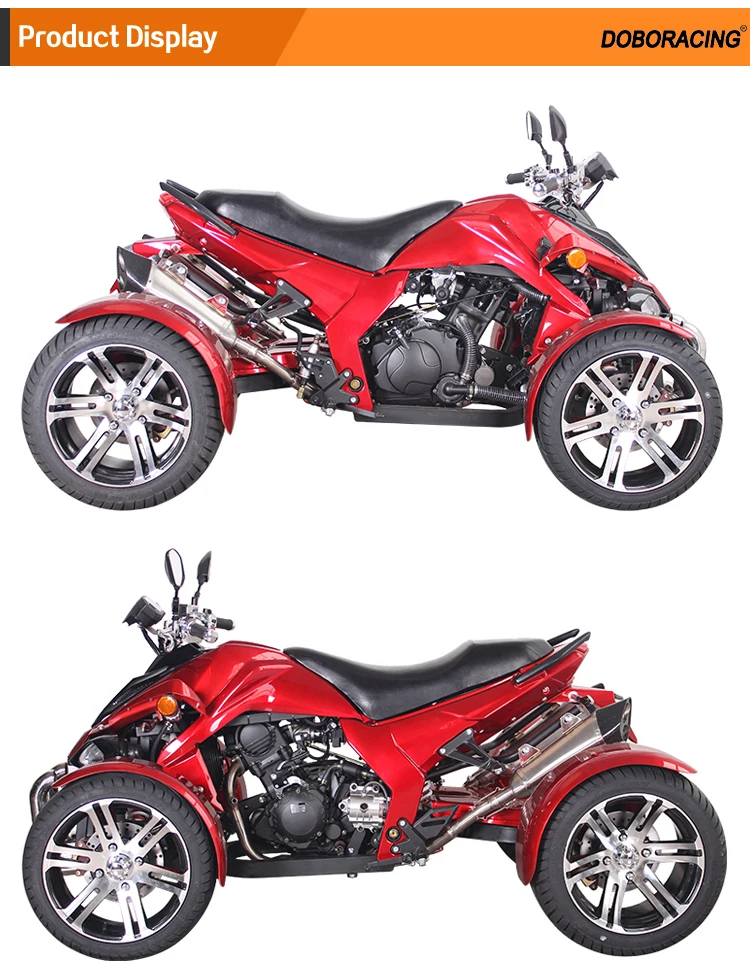 On the other hand, a 1995 model can only go on a reverse from the first gear.
On the other hand, a 1995 model can only go on a reverse from the first gear.
More riders say that engaging in reverse from either first gear or neutral should work. All you need to do is disengage or pull in the clutch handle, pull up on the reverse lever, and then push it backward. Still, this method does not seem to be fool-proof.
The first thing you should know is where the reverse lever is. It is on the right-hand side of the Yamaha Warrior 350 engine, above the crankcase. Once you have found it, go on neutral then pull in the clutch. Next, you pull up on the reverse lever and then pull it back towards the rear tire.
Do these first two steps correctly, and the red, reverse light will come on (if it does not, then most likely, the lever is not pulled back all the way). When the red light is on, slowly let out the clutch and you will begin to reverse.
The above steps should put you in reverse mode. However, if it still doesn’t work, you need to check whether your reverse lever may need an adjustment.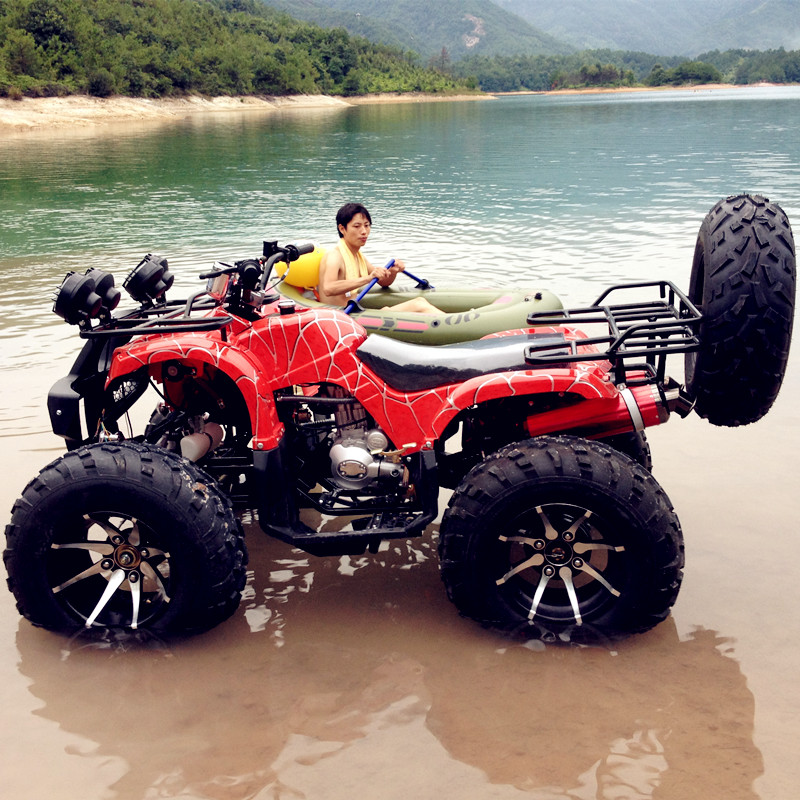 You may also want to confirm that all the linkage to the transmission is still properly attached.
You may also want to confirm that all the linkage to the transmission is still properly attached.
Add some lubrication to the metal rod of the reverse lever by spraying some WD-40 or adding a bit of oil. You may have to bounce back and forth on the seat, moving the rear tires just a bit to let it slide in and get into reverse.
One of the things that make the Warrior stand out from the competition like the Suzuki R450 is that it has a single overhead cam design. SOHC engines do not suffer from cam phasing problems that can cause engine damage. It also costs less and requires less in-depth knowledge of advanced engines if you only intend to modify the quad to add more horsepower.
Its six-speed transmission is a plus. The addition of the sixth speed or overdrive helps to enhance fuel economy and allows higher rapidity than a five-speed one. Paired with the sports shocks, it’s also great for trail riding. The reverse on the Warrior 350 is remarkable and does a mighty job of getting you out of any situation that you may unknowingly (or knowingly) get into.
A lot of enthusiasts find the strong mid-range pulling characteristics of the Yamaha Warrior 350 appealing. Riders never had a fit, nor had they been stranded anywhere. Despite its smaller size, the Warrior can carry up to 400 pounds. It is sturdy and reliable, and certainly needs fewer repairs than the Ranchers and Recons. Battery replacement is all it ever needs.
Some of the drawbacks of the Yamaha Warrior 350 involves its build and suspension. The low-end power, narrow width, heavy frame, and outdated suspension that previous owners and riders appreciate while riding on wooded trails are the same things that make them advise against using it for strict dune riding or all-out races.
Some find its seating ergonomics terrible since the rider sits so deep in the saddle – it puts stress on the knees for aggressive riders. It is also extremely heavy and does not have a kick starter.
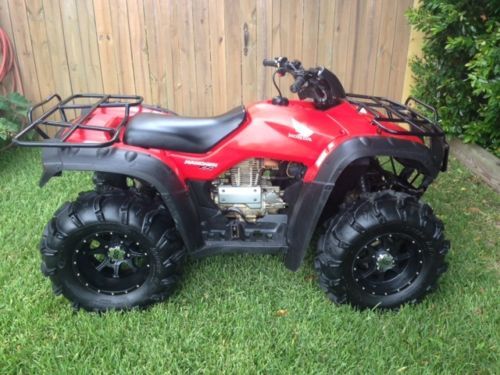 Add a slip-on exhaust, and you can get 2-3 HP more plus increase your torque at the same time.
Add a slip-on exhaust, and you can get 2-3 HP more plus increase your torque at the same time.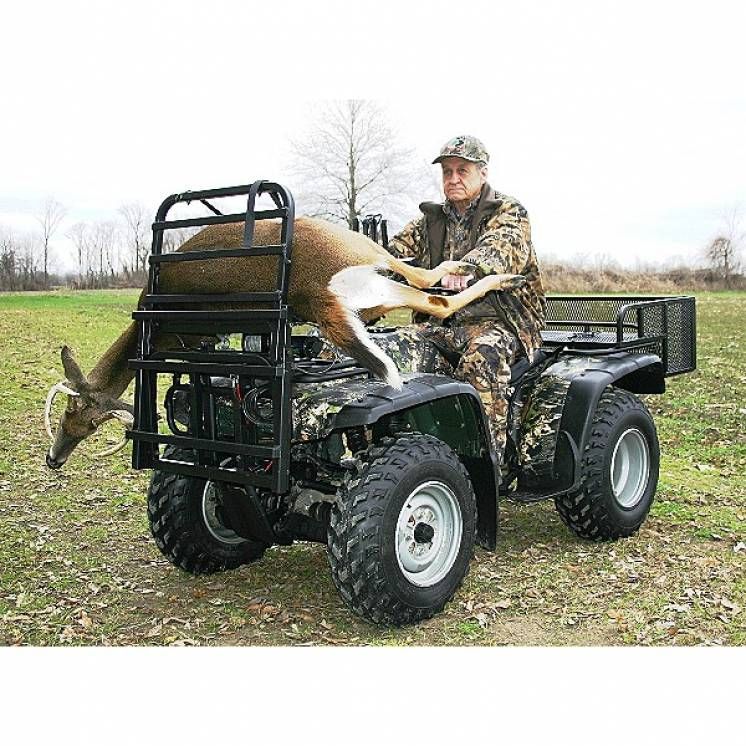
Yamaha Motor Company Limited is a well-known manufacturer of motorcycles, multipurpose engines, intelligent machinery, and other motorized products. It was established in 1955 and based in Iwata, Shizuoka, Japan. The company is the maker of Yamaha Warrior 350 and is also involved in the development of tourist businesses and the management of leisure, recreational facilities, and related services. Currently, Yamaha is the world leader in water vehicle sales and the second largest in motorcycle sales.
With its 350-cc air-cooled engine, electric start, and low-end power, the Warrior set the bar for four-wheelers.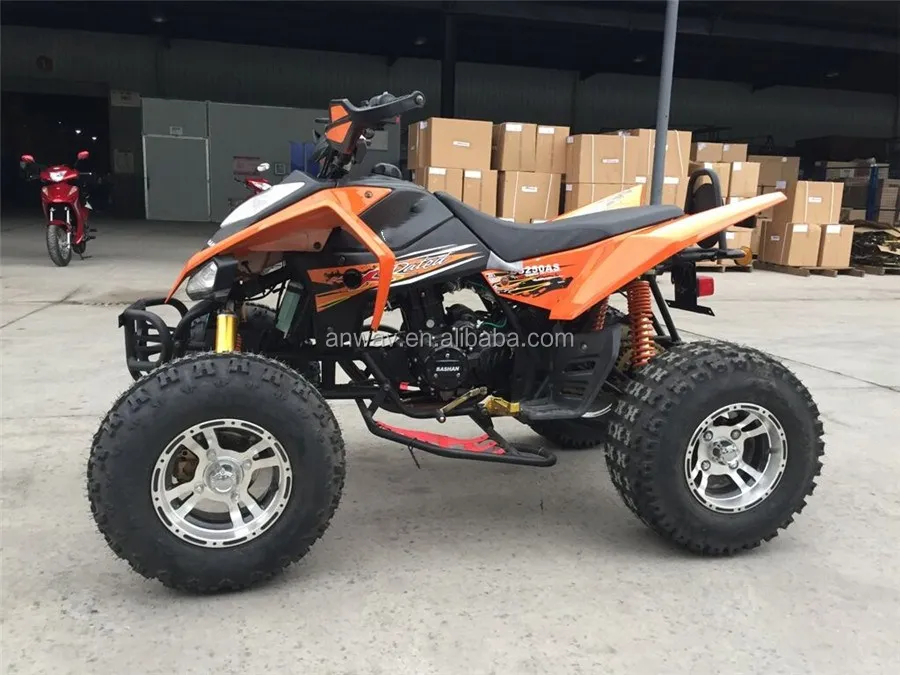 It is an enjoyable machine for both skilled and novice riders and is still popular with the racing crowd even to this day. The Yamaha Warrior 350 is the perfect choice for anyone looking for a stylish and dependable all-terrain vehicle. A quad for the ages – what more could you ask?
It is an enjoyable machine for both skilled and novice riders and is still popular with the racing crowd even to this day. The Yamaha Warrior 350 is the perfect choice for anyone looking for a stylish and dependable all-terrain vehicle. A quad for the ages – what more could you ask?
Anybody into their ATVs will know that the Honda FourTrax line remains a staple offering of the company. These vehicles are marketed as being ‘big, strong, and powerful’. The Honda Rancher 350 was the second product in this line, although it was never emblazoned with the FourTrax branding. Any ATV in this line descends from the Rancher 300 and 350. Buying a used Honda Rancher 350 allows buyers to secure a great vehicle at a low price.
Contents
As the name suggests, the Rancher 350 is designed to be a workhorse.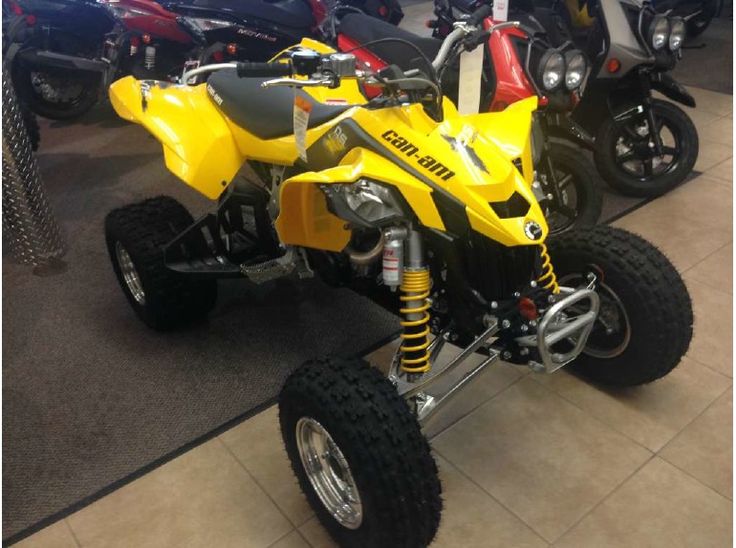 It is for those that need a lot of behind their vehicle, but do not want to be paying through the nose for the privilege.
It is for those that need a lot of behind their vehicle, but do not want to be paying through the nose for the privilege.
The four-stroke engine is at the heart of the Rancher 350. This powerful motor is able to allow the vehicle to hit a top speed of around 40mph in ideal conditions.
The drivetrain in the Rancher 350 is unique. There are two options. Both of these have four gears, plus reverse gear. There is the standard gear shift option. However, the most desirable version of the 350 is the models that had the Electric Shift System installed. This allows drivers to effortlessly change gears with the press of a single button.
As with most Honda ATVs, these vehicles came equipped with Bridgestone tires. However, unless the ATV didn’t get any use, these tires would have long since been replaced. Nowadays, any prospective buyer will need to ask the seller which tires are fitted. Although, of course, these can just be replaced if required.
Suspension on this ATV is pretty standard.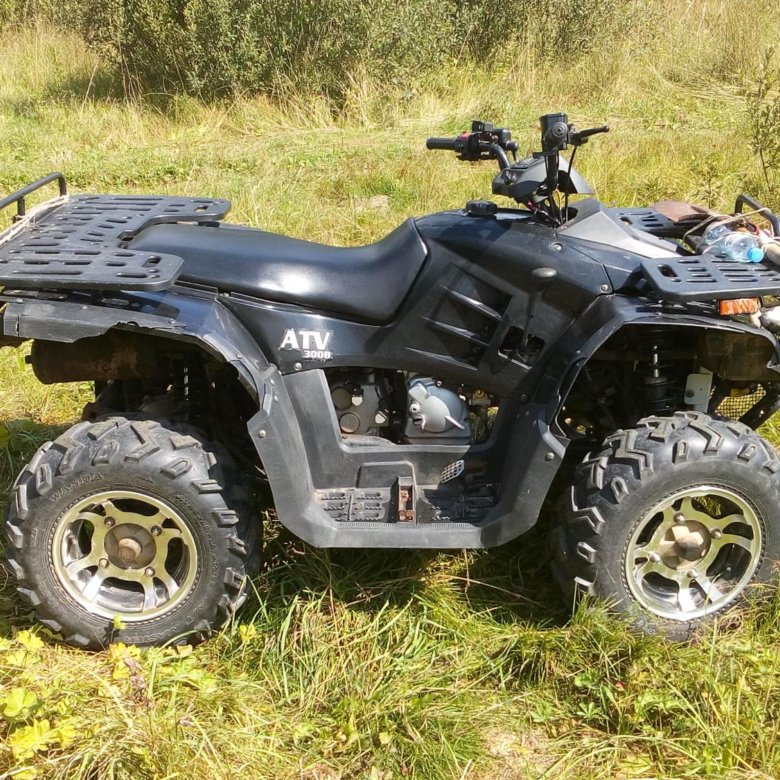 There is a double-wishbone at the front, coupled with arms at the top and bottom. On the back, there is a single swing arm coupled with a shock absorber. The suspension hasn’t been particularly designed for major off-roading. Instead, it has been designed for a few bumps while tending fields or ranches. It is a work vehicle, after all.
There is a double-wishbone at the front, coupled with arms at the top and bottom. On the back, there is a single swing arm coupled with a shock absorber. The suspension hasn’t been particularly designed for major off-roading. Instead, it has been designed for a few bumps while tending fields or ranches. It is a work vehicle, after all.
The brakes are your typical hydraulic drum and mechanical drum combination. These sit at the front and the rear of the vehicle respectively. This allows fast and efficient braking.
One look at the vehicle will show just what it has been built for. It has been designed with power in mind. However, the size of the vehicle is quite deceptive. While it is a larger ATV, it is surprisingly light. In the right hands, it is able to accomplish what many other similarly sized ATVs cannot.
Model Years AvailableThe Rancher 350 was produced between 2000 and 2006. For part of its life, the manufacturing of this vehicle actually overlapped with that of its successor, the Rancher 400. This goes to show just how in-demand the 350 was at the time.
This goes to show just how in-demand the 350 was at the time.
Unlike many other ATV models, the 350 didn’t really get major upgrades each year. There was no need. It was a good enough model for the price even at launch. Of course, buyers will still want to look for the later models of the 350, if only for the fact that many of them have been used for a lot less time. Although, a few small improvements were made from 2004 onward, which many people claim made a far smoother ride. Although, most people wouldn’t likely want to pay the extra cash for that benefit alone.
How much is a Honda Rancher 350 Worth?The Honda Rancher 350 nowadays sells for between $1,500 and $3,000. This is dependent on the model year and the condition of the 350. This is far below the original retail price of $5,000 for the base model of the Rancher 350.
The problem with the Rancher 350 is not so much the price. It is the fact that they are such a good model that a lot of people never end up selling theirs.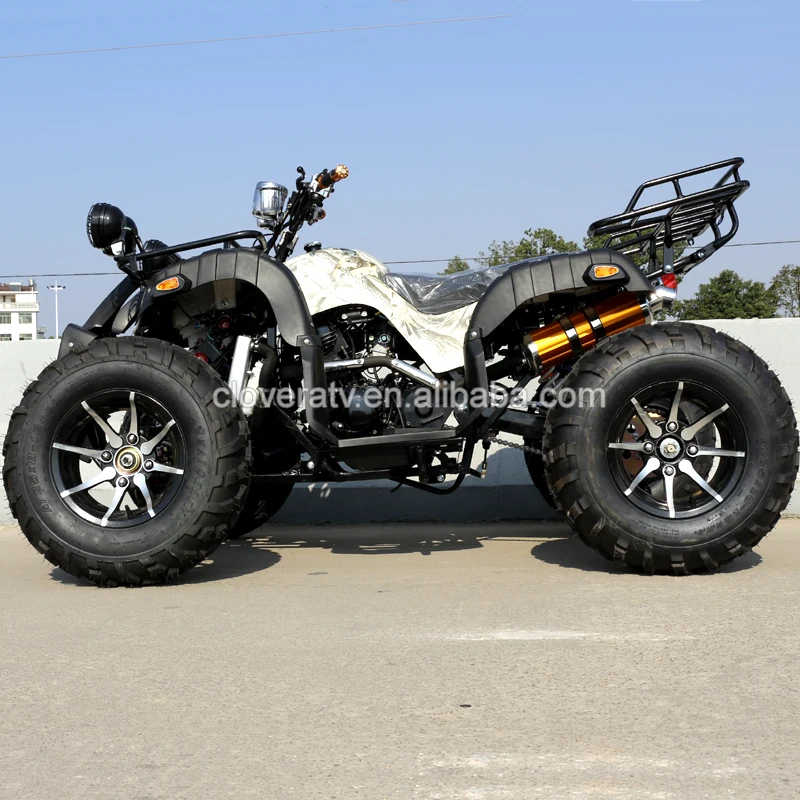 This means that buyers will have to be incredibly lucky to track one down. This is the hallmark of a good vehicle.
This means that buyers will have to be incredibly lucky to track one down. This is the hallmark of a good vehicle.
This is a vehicle that has been designed to be used day-in, day-out with the minimum of fuss.
Despite last being manufactured well over a decade ago, a lot of the Rancher 350s still being used have barely had to undergo any maintenance. They are still being ridden, some without any changes in the spare parts. It just works. Even if it did magically stop working one day, the spare parts for the 350 are easy to source. Most companies that deal with ATV repairs will have easy access to them.
It is a vehicle that controls beautifully too. A lot of people riding the Rancher 350 recommend it to those that have never owned an ATV before. This is rare for such a big vehicle. However, this goes to show the level of trust that people have in the Rancher making riding as simple as possible.
Cons of the Honda Rancher 350There aren’t that many major issues with the Honda Rancher 350.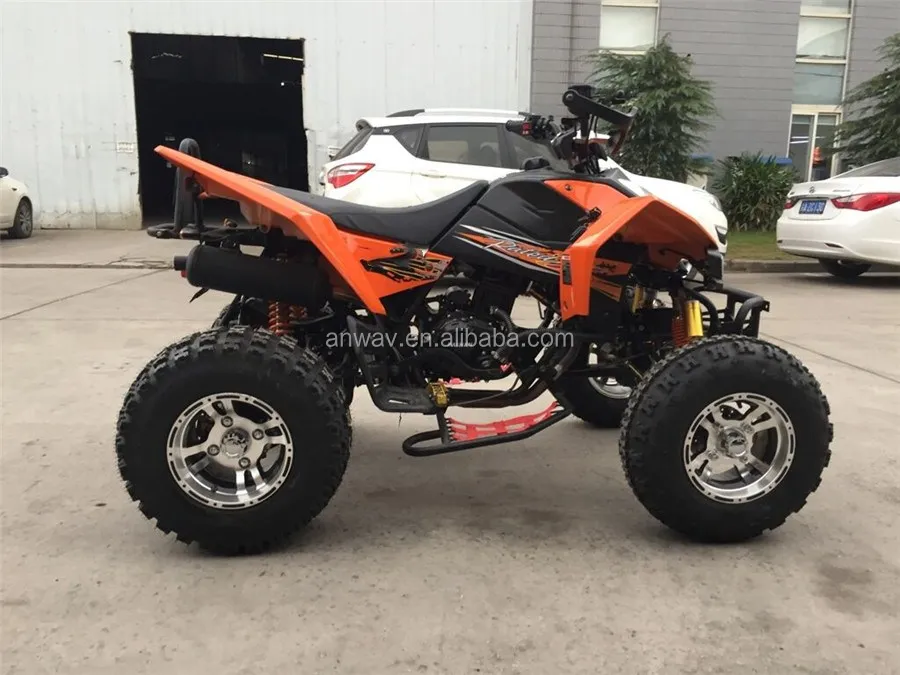
Perhaps the main complaint is that it doesn’t do brilliantly well while traveling at slower speeds. However, this is going to be well under the 5mph mark, which most people will likely never be traveling at anyway.
The other issues are more due to the age of the vehicle. This means a bit of engine spluttering here, and some looseness in the components here. However, as the pros suggested, this isn’t really a major problem. There are still spare parts available for the 350, and there will be for a long time to come. This means that if there are any issues with the components, they can easily be swapped out for something better.
ConclusionThe Rancher 350 is designed for those that want a working vehicle. As long as somebody isn’t too keen on doing huge amounts of off-roading, or even a bit of ATV racing, the 350 is capable. There is a reason why Honda manufactured this vehicle for so long, and there is a reason why many people do not want to sell theirs, even with more modern options being available.
From time to time, the ATV will be naughty and behave differently than you would like. Nothing beautiful lasts forever, right?
One of the most common problems you may encounter is the ATV suddenly pulling to the left or right.
If you are lucky, your problem may have a simple solution)
Let's take a look at some of the most common reasons why an ATV can pull to the side, and of course, here we will talk about how to get rid of these problems.
The most common problem that causes the ATV to pull to one side is the difference in rolling resistance due to different tire pressures. Also, the problem may be associated with natural wear or damage to various components of the chassis of the ATV and, as a result, a violation of the angle of the wheels.
So how do you determine what is causing problems when riding an ATV?
As you probably already understood, there can be several reasons.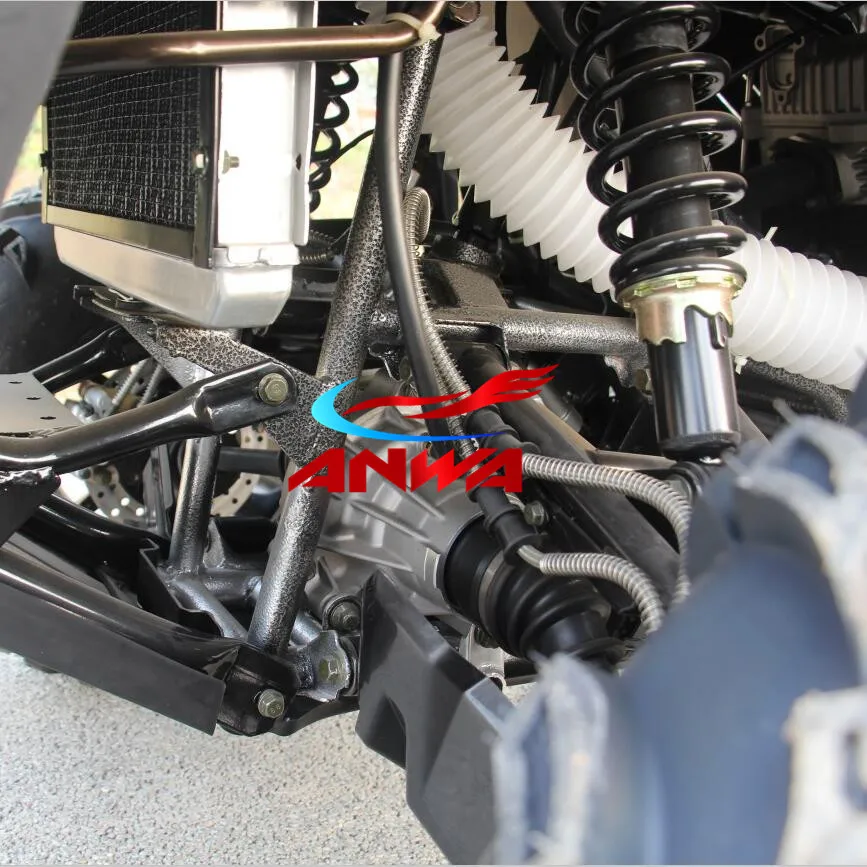
To understand why an ATV wants to pull off the road and dive into a ditch when you really don't want to, you need to do a number of checks.
Although I don't have exact statistics to tell you which malfunction occurs most often, I still recommend that you start with what is easiest to check and fix before spending time and money on more unusual and potentially more complex searches.
In my experience, the most common cause, and by far the easiest problem to check and fix, is uneven ATV tire pressures.
Let's look at what happens when ATV tires have different pressures.
A flat tire has a larger area of contact with the road surface than a normally inflated wheel, as a result of which the friction force, and hence the rolling resistance force, applied to such a wheel will be higher. The wheel will roll more slowly. The opposite wheel will run ahead and try to turn the ATV around the slow wheel. That is, if the ATV pulls, for example, to the left side, most likely, the fact is that the left wheel is lowered.
To solve this problem, you need to equalize the air pressure in the ATV tires. It is best to refer to the operating instructions, which must indicate the required air pressure in the wheels recommended by the manufacturer. The pressure in the wheels installed on the same axle of the ATV must be the same.
At the same time, you should be aware that due to the design features and weight distribution of the ATV, the tire pressure on the front and rear axles may differ.
Check with a good tire pressure sensor.
Most manufacturers complete the ATVs with a set of tools and a sensor for checking air pressure in wheels, for example, ATVs Yacota SELA 200 , Yacota SELA 150 , Yacota Cabo 200035, Yacota Cabo 20035, , , 9003 MOTAX 200 , MOTAX GRIZLIK and MOTAX RAPTOR .
ATVs MOTAX and YACOTA have these sensors in the standard tool kit. If there is no such device in your kit, I recommend that you definitely purchase it. A very slight difference in air pressure in the tires may well be the reason that the ATV pulls to the side when driving in a straight line.
If there is no such device in your kit, I recommend that you definitely purchase it. A very slight difference in air pressure in the tires may well be the reason that the ATV pulls to the side when driving in a straight line.
The air pressure should be checked in both front and rear tires. True, uneven pressure in the rear tires, most likely, will not be the reason for the withdrawal of the ATV from a straight path. Different pressure in the rear tires can provoke another malfunction - premature wear of the rear differential, due to the increased load on it. But this is a story for a separate review.
I always keep this inexpensive instrument in my toolbox, its accuracy is good enough to use.
Also make sure that the maximum tire pressure is not exceeded.
Over time, ATV wheels can wear differently, resulting in the diameter of one wheel being different from the diameter of another wheel. This can also cause the ATV to pull to the side.
To check if the front wheel diameters are the same, you can do a simple check: place the ATV on a flat surface and use chalk to mark the sidewall of each front tire at the lowest point.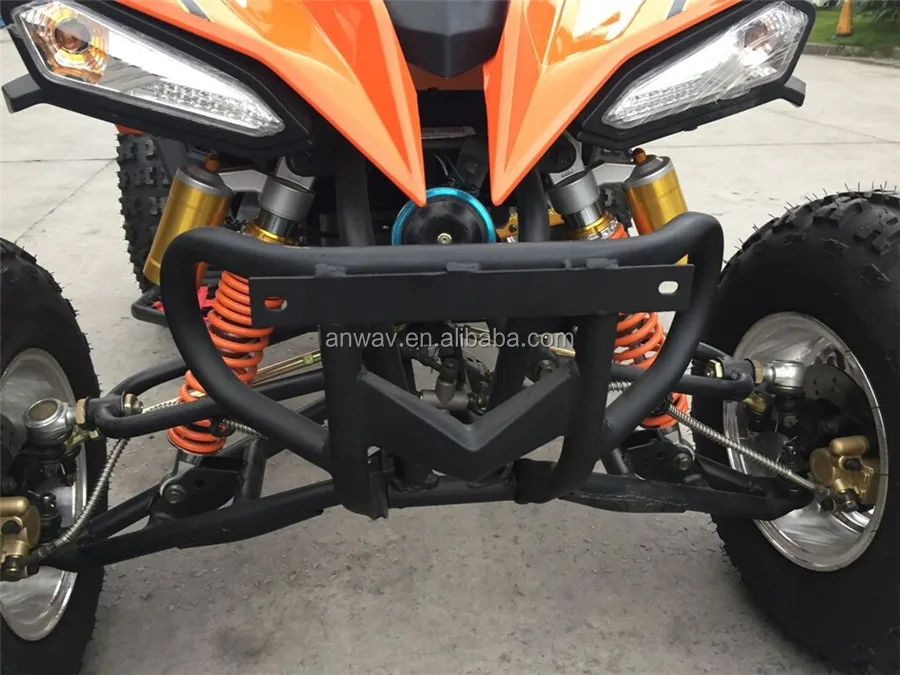
Wheels must be pointing straight ahead, gear lever in neutral position. Roll the ATV forward until one of the wheels has made two or three revolutions and the mark you just made is back to the very bottom, to its original position. Look at the mark on the opposite tire. Ideally, it should also be at the very bottom. If this is not the case, the wheel circumferences do not match.
If the reason for the ATV pulling to the side lies in the difference in wheel circumference, then when driving to the right, the right tire should have a smaller circumference, and when driving to the left, the left one.
Wheel circumference can vary not only due to uneven wear, but also due to air pressure differences in the tires.
The wheel is like a balloon, the higher the pressure, the larger its diameter and vice versa.
For this operation, you need to lift the ATV, place it steadily on the supports so that all the wheels are in a suspended state.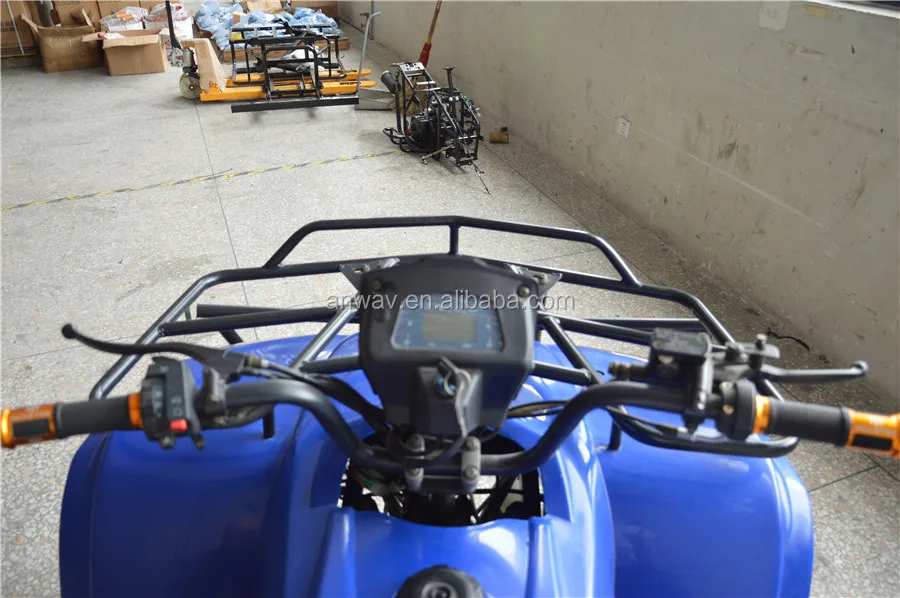
It is very convenient to use the bike racks to lift the ATV. If you do not have them yet, and you plan to service the ATV yourself, I recommend purchasing them. They are relatively inexpensive. Tackles will greatly simplify the ATV maintenance process.
Check that there is no excessive play in the ATV suspension and steering joints. Start with the tie rods and steering rack. This operation is more convenient to carry out with an assistant. Have an assistant move the ATV handlebars to the right and left, often and with a small range of motion. And you, in turn, keep your hand on the swivel, which are subject to verification. Check the steering tips and tie rods one by one. You will feel the excess play in the hinge with your hand. If the ATV steering wheel has excessive play, but the tie rod and steering tip are in order, then the steering rack itself or the steering shaft bushing may have play, which can also be checked by hand. The steering column bushing usually wears out over time.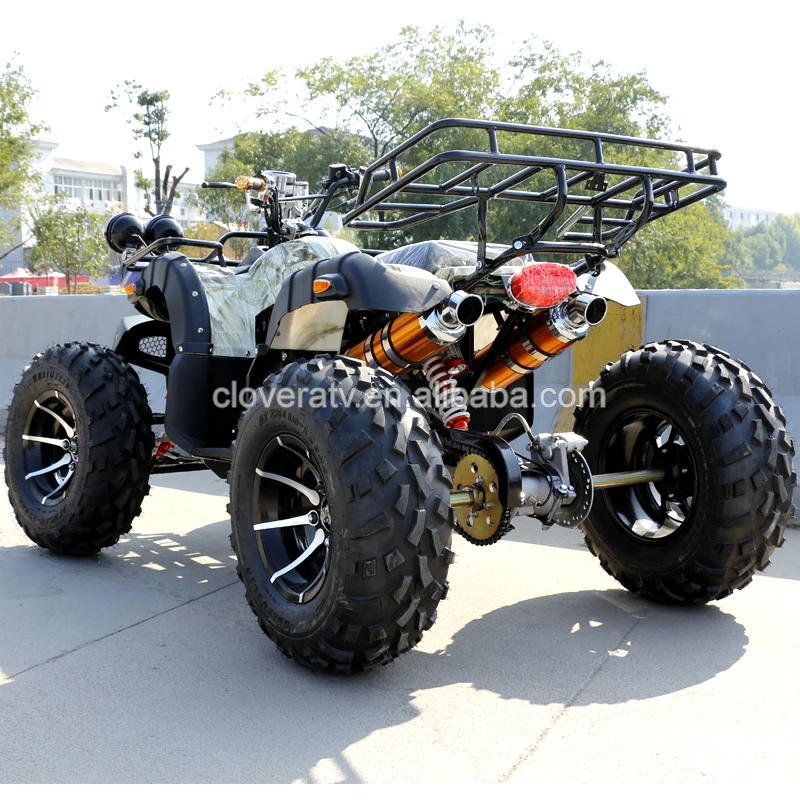 The same goes for the ball joints on the tie rods.
The same goes for the ball joints on the tie rods.
Tighten any loose bolts and replace worn parts. Worn parts can break soon, so replacing them won't be a waste of money, even if their wear isn't the reason your ATV pulls to the side.
In addition, the wheel bearings must be checked for excessive play.
To do this, have a helper grab the top and bottom of the wheel and shake it while you check for play in the ball joints and wheel bearings.
Check how easy the wheels turn. The wheels should rotate freely, without noise and crackling. The presence of noise indicates wear on the hub bearing. And the tight running of the wheel is about bearing wear or souring of the brake pads. As we said, if one of the ATV's wheels is spinning at a slower speed than the other wheel, the ATV will pull towards the slow wheel.
If necessary, replace the bearings and service the front brake calipers. Sometimes the caliper is easy enough to clean, and sometimes you can’t do without replacing the brake cylinders or the caliper bracket itself.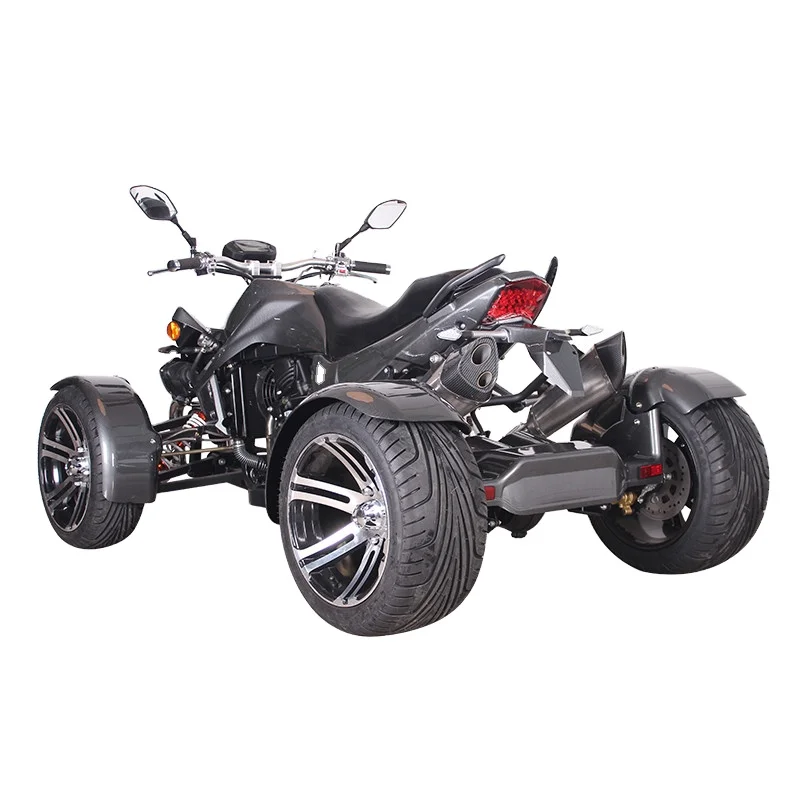
Complete the work with suspension lubrication. The chassis of ATVs of the brands YACOTA , MOTAX , AVANTIS is equipped with special grease fittings through which you can easily lubricate the desired suspension unit. We have already told, in one of the reviews, using the example of a gasoline 125 cc ATV MOTAX T-REX , about the features of maintenance of the ATV suspension. Regular maintenance of your ATV will definitely prolong its life.
Control check three: check the running gear for geometry violations.
If you use the ATV for active riding or sports, then it is possible that you have bent some part of the suspension on the next jump. ATV front suspension A-arms are especially prone to damage if you hit a stump or rock while riding. "Fast-growing" trees suddenly appearing in front of the ATV as you drive, a common story!)
A-arms are designed to absorb heavy suspension shock and, through their integrity, retain more expensive and hard-to-find ATV parts that are more difficult, more expensive or even impossible to repair, for example, an ATV frame.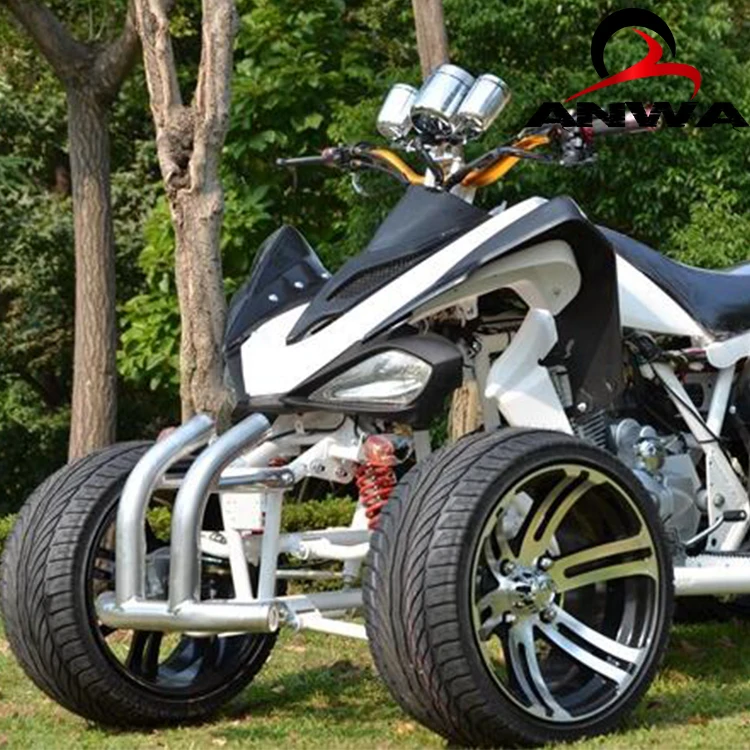 It is not always easy to see if the suspension arm is bent or not. It happens that the levers do not have a symmetrical shape, because the ATV suspension was originally designed this way by the manufacturer.
It is not always easy to see if the suspension arm is bent or not. It happens that the levers do not have a symmetrical shape, because the ATV suspension was originally designed this way by the manufacturer.
Compare the distance between the axles of the front and rear wheels of the ATV on the right and left sides. If there is a difference, then one of the suspension arms is most likely damaged.
The camber and toe angle can be adjusted by eye yourself, but it is better to contact specialists who have the necessary measuring equipment and data on the required wheel alignment values.
I hope you find this article useful.
For all questions related to the purchase, selection and repair of ATVs and other equipment presented in the VEZDEHOD online store, please contact our consultants. We will be happy to help you choose a new ATV according to the specified parameters and solve any technical issue related to the malfunction of already purchased equipment.
I bought a scooter in this store.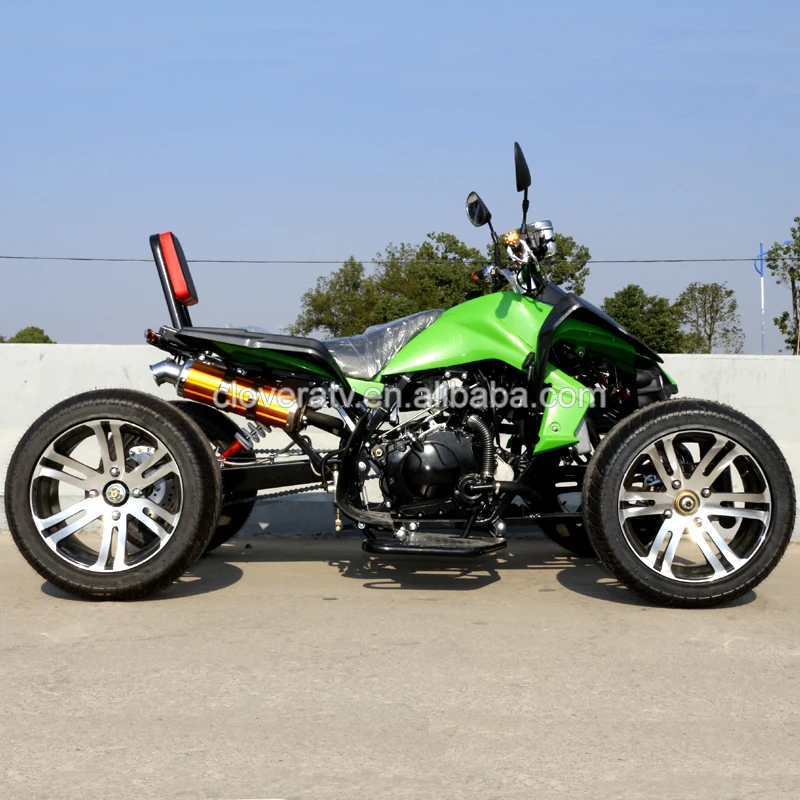 Omaks falkone 150cc. Quite suitable device for trips around the city and rough terrain. The speed is quite high, about 90-100 together goes. Accelerates quickly. bypasses all the cars from the light fixture. Picked up quickly the next day. Advised on the scooter competently. In general, I am satisfied.)))
Omaks falkone 150cc. Quite suitable device for trips around the city and rough terrain. The speed is quite high, about 90-100 together goes. Accelerates quickly. bypasses all the cars from the light fixture. Picked up quickly the next day. Advised on the scooter competently. In general, I am satisfied.)))
Igor,
Dzerzhinsk
I bought an omax alpha 72cc moped, an excellent device, by the way. True, I ride on it for only 3 weeks. My weight is 90 kg. rushing without tension, the maximum accelerated on it to 75 km / h, then it just became scary, obviously, it could have accelerated faster. Consumption after the car is wildly happy, in the very first days I drove 1000 km, and the tank was filled only a couple of times.
Ilya,
Dzerzhinsk
Thank you for helping to make a present for my son! It is a pity that in my childhood there were no such - I advise everyone!
Zhubatov Timur,
Balakhna
I ride an ATV, Polar Fox XY 500 ATV orange color so far I like everything, passed the first round of 350 km, changed the oil in the gearboxes, filters, start up well!
Minkevich Artyom,
NiNo
I would like to thank Evgeny for the quality of service! Explained everything, showed, arranged delivery.
Novikov Roman Nikolaevich,
Engineer, Bor
I purchased an Omaks SP302B ATV. Satisfied with the equipment - everything works fine. Thank you for the quality service!
Andrey Gavrin,
Nizhny Novgorod
First impression - for the money, it's 100% worth it. Everything was done comfortably and soundly, the only thing that had to be tightened up. Further directly about any nishtyak. Headlight with lamp H4 near / far. Stop signal and dimensions. Electronic speedometer with clock, rpm and speed respectively. 2 levels of heated handles. The downside is that the trigger is not heated, the thumb freezes. I will farm myself. In emergency mode, when the battery is dead, you can start it with a ratchet wrench, which comes with two heads for chain tensioning and a spark plug or pull another snowmobile from a pusher. The throttle can be controlled either by a trigger or by a handle, like on a motorcycle. The rope is optional. The trigger is closer to me, I left it.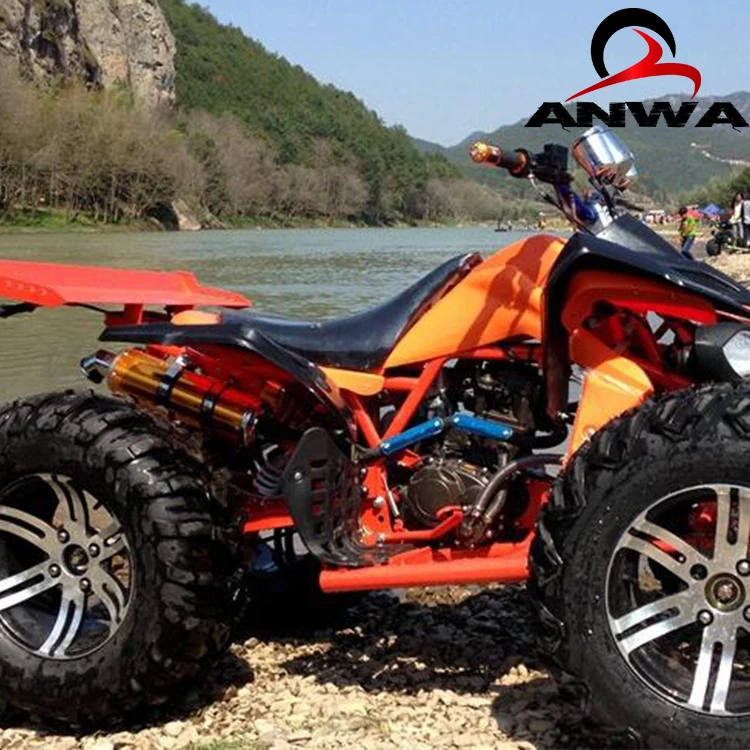 Under the seat is a wardrobe trunk, quite roomy, plus a trunk with a tow bar. A bunch of cons. I already wrote about a non-heated trigger, there is a fuel sensor, but it is not highlighted. Engine 125cc. Clone of some kind of Honda in my opinion 1958 years of release. There are no complaints. My brother has the same motor on a motocross bike, it didn't cause any problems. 3 gears forward and one reverse. Everything turns on without a clutch. First gear low. I start from the second, 15 km to the third and drove on. Oil cooling, radiator present. There is an overheat warning lamp on the panel, as well as a gear indicator. Handling is super, you can turn around on the spot, very obedient. In a snowdrift of 70 cm but with a crust, the two walked confidently. Epilogue: I needed a little assistant for hunting and fishing, without the need for a trailer, so that I could throw it into the runner and go. And of course, so that the child can ride. While happy as an elephant. Well, then - time will tell.
Under the seat is a wardrobe trunk, quite roomy, plus a trunk with a tow bar. A bunch of cons. I already wrote about a non-heated trigger, there is a fuel sensor, but it is not highlighted. Engine 125cc. Clone of some kind of Honda in my opinion 1958 years of release. There are no complaints. My brother has the same motor on a motocross bike, it didn't cause any problems. 3 gears forward and one reverse. Everything turns on without a clutch. First gear low. I start from the second, 15 km to the third and drove on. Oil cooling, radiator present. There is an overheat warning lamp on the panel, as well as a gear indicator. Handling is super, you can turn around on the spot, very obedient. In a snowdrift of 70 cm but with a crust, the two walked confidently. Epilogue: I needed a little assistant for hunting and fishing, without the need for a trailer, so that I could throw it into the runner and go. And of course, so that the child can ride. While happy as an elephant. Well, then - time will tell.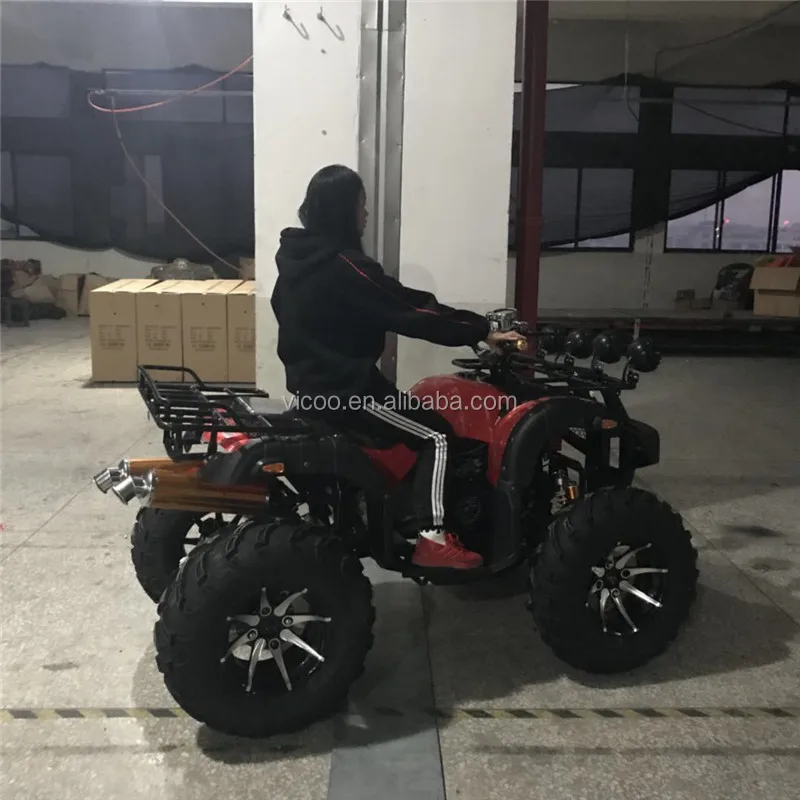
Alexey Yarenko,
Nizhny Novgorod
I would like to share my impressions about the Omaks 150 ATV)) I am satisfied with the equipment, I am pleased with the reliability and endurance of the main components and assemblies. Operation is quite tough: water, swamps, snow.
Sergey,
Vyksa
I am the owner of an omax 250 motorcycle, but it looks like a Kawasaki, but it’s a cheap fake, but I’m learning to ride the very thing, I know people who skated for 3 seasons and didn’t know any problems. Thank you for your work!
Alexander D.,
Lower
Bought a Polar Fox XY 500 ATV-2 ATV. True, for a long time I could not make a choice, the guys correctly told which model would be best suited for what, and I realized that I needed a two-seater ATV. I have already driven 1200 km. Everything works, no complaints! I advise everyone!
Smirnov Nikolai,
Nizhny Novgorod
Thank you for your work! I am happy with my purchase from them.